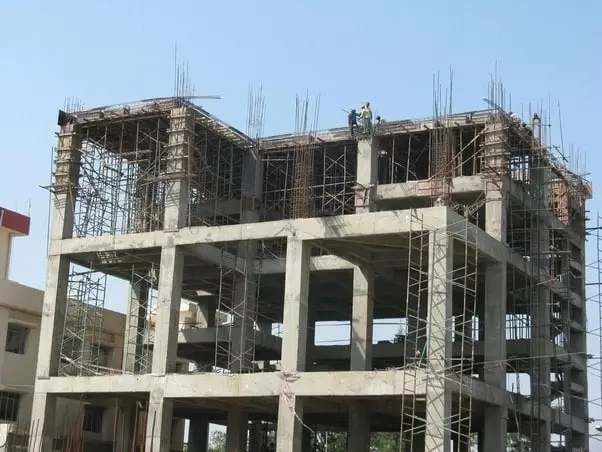Table of Contents
In RCC framed structure, the load is shared from a slab to the beam then to the columns, further to the lower columns, and lastly to the foundation which shares the load to the soil, the walls are made after the frame is constructed, most tall buildings utilize RCC technology.
Cement concrete is strong in compressive strength but vulnerable in tensile strength, to enhance the tensile strength we utilize the mild steel bar in cement concrete.
1. Requirement in RCC Framed Structure
The necessity in RCC framed structure is as follows:
a. The steel bars used in cement concrete give a strong strength to the structure.
b. The steel bars are marked or corrugated to improve the bonding or cohesion between concrete and steel.
c. Care should be taken that the steel bars used for RCC work should not have any joints, so steel must have a longer length.
d. If full-length steel bars are not available, the steel bar must be given the appropriate overlap and the overlap must be vibrated.
e. Care should be done so, that steel should not be bothered at the time of concreting.
f. The steel rods must be correctly connected and have appropriate planks or plates for walking.
g. The curing of concrete is done for at least 20 days.
2. Parts of RCC Framed Structure
The parts of the RCC framed structure are as follows:
a. Slab
The slab may be defined as the structural parts of modern buildings, containing a flat, horizontal surface prepared of cast concrete.
b. Beam
The beam is a horizontal structural element made up of wood, steel, or concrete that resists the lateral loads coming from the superstructure by means of bending.
c. Plinth Beams
In RCC framed structure, the beam on the ground level or plinth level (the lowest liveable level) is known as ‘plinth beams’.
d. Column
Columns are defined as long slender member load axially in compression and having lateral dimensions very small as compared to their lengths.
e. Foundation
Foundation is the substructure that transfers the load from the superstructure to the soil beneath. It is responsible for the stability of the whole structure.
f. Cantilever
A cantilever beam is an inflexible structural component held at one end and free at the other end. The cantilever beam can be either prepared of concrete or steel whose one end is bound or tied up to a vertical support. It is a horizontal beam structure whose free end is opened to vertical loads.
For example Balconies, lofts, and canopies.

3. Advantages of RCC Framed Structure
The advantages of RCC framed structure are as follows:
a. Construction of floor area is often 10% to 12% which is larger than that of a load-bearing wall, therefore such a building is ideally economical where the worth of the land may be very excessive.
b. It is very easy to change the internal plan of a room, bathroom, WC, etc. by changing the actual position of the partition wall which ultimately gives more freedom in planning.
c. Monolithic construction will be taken to resist shocks and vibrations more actually than load-bearing walled buildings.
d. Normal earthquake effects can be withstood by providing the required design.
e. It is more rapid in construction, saves a lot of time, and initial finishing.
f. No matter whether the soil is soft or hard, buildings with RCC frames can be established anywhere.
g. Maintenance costs are very low and can be neglected.
4. Disadvantages of RCC Framed Structure
The disadvantages of RCC framed structure are as follows:
a. Problem in repair, modification, and development.
b. It has very low tensile strength.
c. Conventional formwork construction methods slow things down.
d. Cracks formed in concrete because of shrinkage and load.
| Read Also: One Way Slab Vs Two Way Slab |

